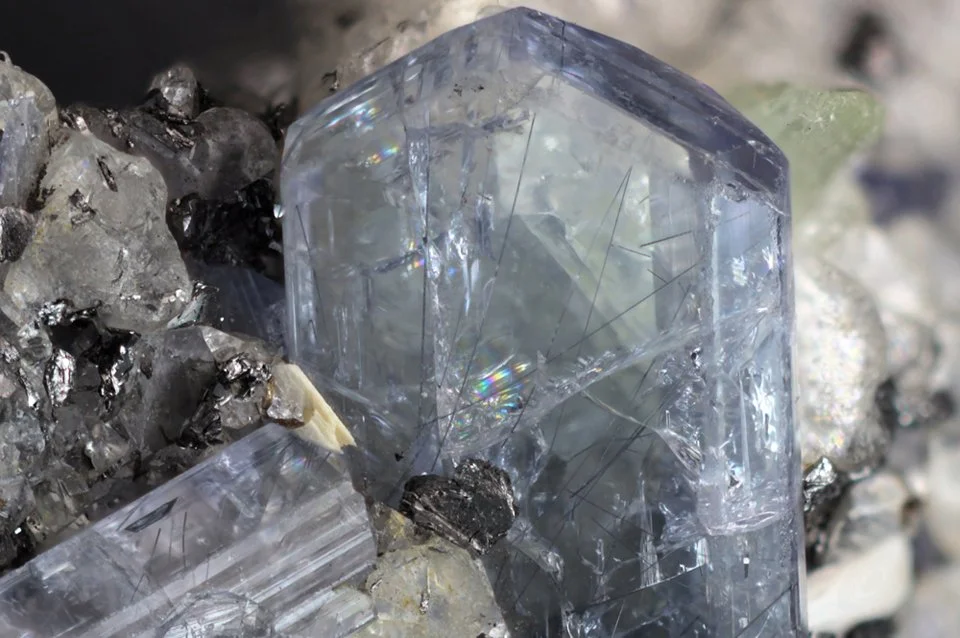Described as “Cylindrical whiskers with a metallic luster” by my colleague John Jaszczak who helped to officially describe the mineral, merelaniite is named in honor of the miners in the Merelani hills of Tanzania where the first analyzed specimens came from.
“Merelaniite lacks the eye-catching qualities of the colorful gem crystals of tanzanite that the workers toil to unearth in the area’s underground tunnels, but its intricate beauty reveals itself when viewed up close. Under a microscope, merelaniite’s layers look like delicate paper rolled into a scroll, a rare structure in the mineral world. At the atomic scale, it’s incredibly complex crystal structure is also a thing of great beauty.” - John Jaszczak
In the quartet, each of the players exist in their own musical “cylinder” with tiny, subtle gestures or “whiskers” that emerge in and out of the fabric of the composition. These repetitive figures are created entirely from the pitches of the C major scale, taking advantage of the natural resonance of open strings and harmonics found in the instruments. The delicate gestures undergo subtle changes, changes that may not be obvious initially but later emerge as new figures woven in between the ostinato passages that occur throughout the piece.
Cylindrical Whiskers
(merelaniite)
Instrumentation: String Quartet
Duration: 8 minutes
Premiered: October 17, 2019 by Tuuli String Quartet

